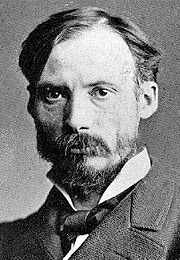


Oil on canvas
21 x 31.7 cm. (8 1/4 x 12 1/2 in.)
frame: 41 × 51 × 5 cm (16 1/8 × 20 1/16 × 1 15/16 in.)
L.1988.62.17
Signed lower right: Renoir.
Louis Bernard; [sold to Bernheim-Jeune, Paris, 26 Sept. 1916]; sold to Laroche, 7 Oct. [1916?]. Marcel Kapferer (ca. 1872–), Paris. Henry Pearlman, New York, by 1958; Henry and Rose Pearlman Foundation, after 1974.

Pierre-Auguste Renoir (1841-1919)
Renoir was one of the core artists associated with Impressionism in France, best known for paintings dedicated to themes of pleasure, ranging from sun-dappled scenes of outdoor leisure to voluptuous nudes. Renoir was born in Limoges and grew up in Paris in modest circumstances; his father worked as a tailor and his mother was a dressmaker. At thirteen, Renoir was apprenticed to a porcelain painter and developed ambitions to become an artist. He copied Old Masters at the Louvre before gaining admission to the École des Beaux-Arts in 1862. Renoir soon abandoned formal training to follow the example of the Barbizon painters, joining other young artists painting en plein airin the vicinity of the forest of Fontainebleau.
Renoir was friends with many of the artists who became associated with Impressionism, including Alfred Sisley and Claude Monet. In the late 1860s and early 1870s, Renoir sometimes painted landscapes side by side with Monet while they experimented with new techniques. Yet Renoir preferred to focus on the human figure, making portraits and contemporary genre scenes his major subjects, as exemplified in his Bal du Moulin de la Galette (1876). Renoir’s vivid palette and effervescent brushwork departed from the academic norm, and rejection from the official salons in the early 1870s led him to seek opportunities to exhibit independently. Renoir joined with other like-minded artists in 1874, forming an alternate group to exhibit together in what became known as the Impressionist Exhibitions. By 1878, however, he returned to showing at the official Salons. A trip to Italy in the early 1880s had a major impact on Renoir, drawing him back to Old Master painting, which encouraged him to experiment with a more linear style. In his last several decades, however, he created works that were partially inspired by artists such as Boucher, Rubens, and Titian, particularly in his fleshy monumental nudes.